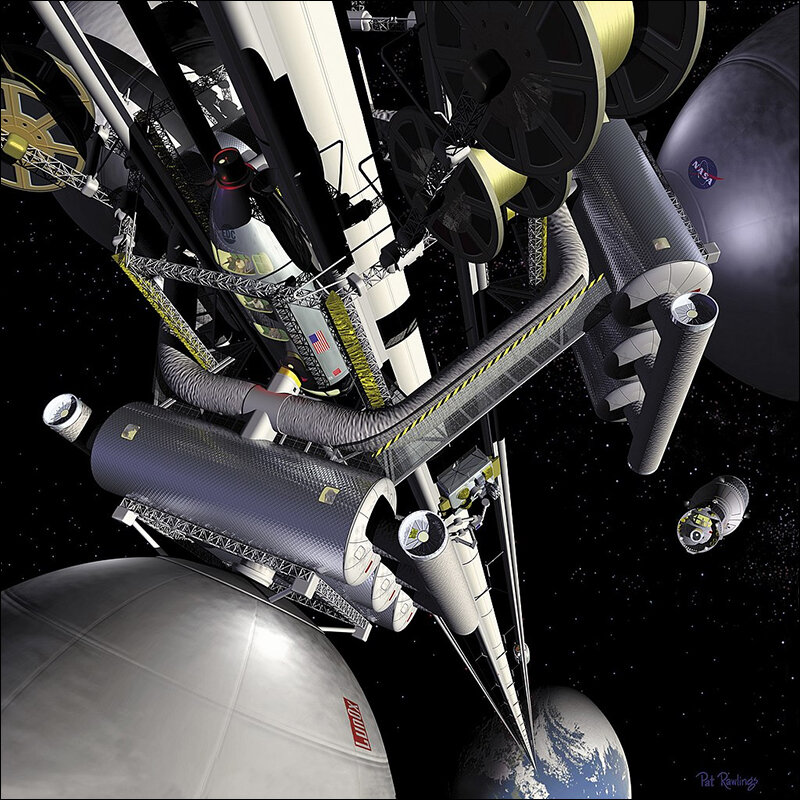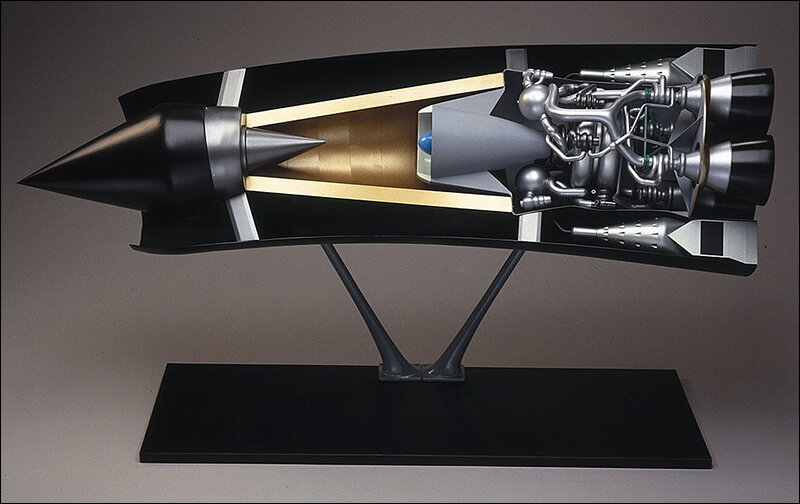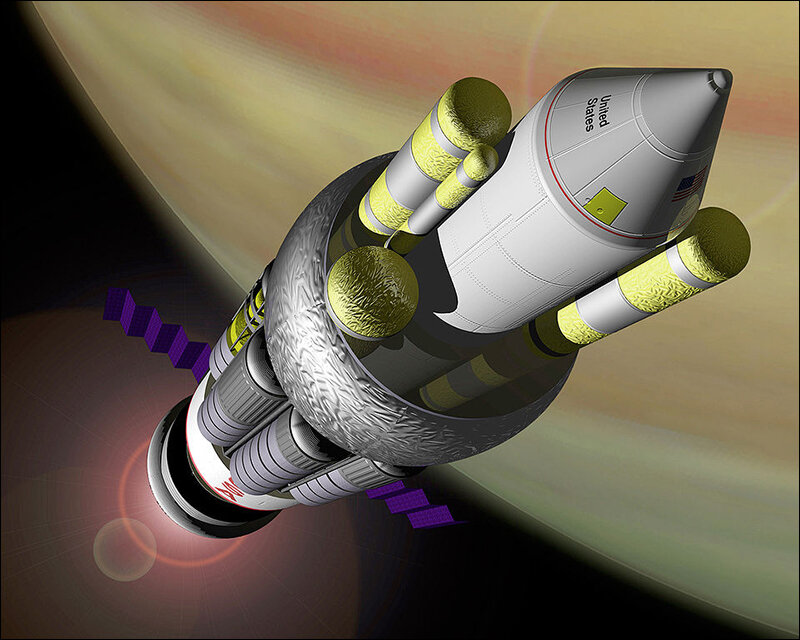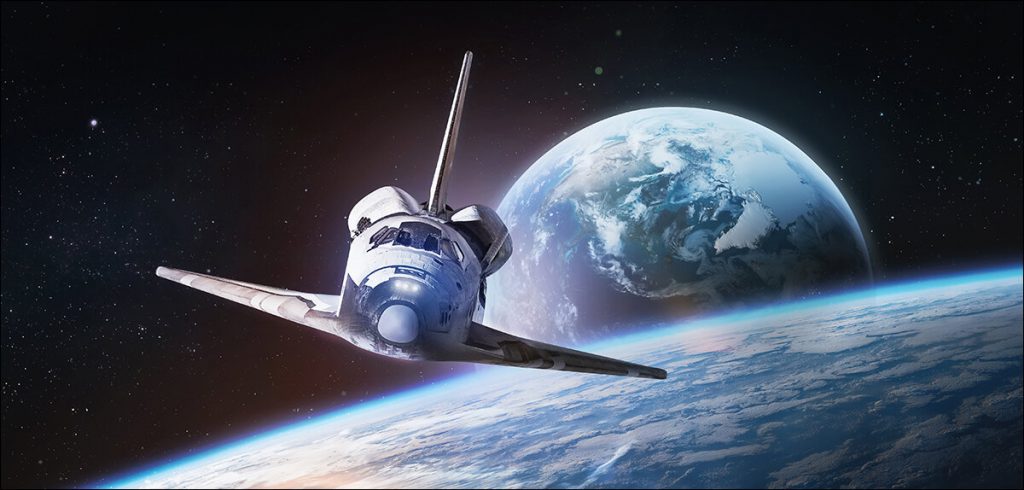The biggest hurdle to being a space-faring civilization is the very first – beating gravity, writes Satyen K. Bordoloi as he outlines some of the strangest ways to reach escape velocity
In almost every sci-fi film, ships cross in and out of earth’s atmosphere with ease. In reality, achieving escape velocity has proven a hard problem. Earth’s surface is so deep in a gravity well that the escape velocity required to get out of it is 11.2 kilometers/second.
So far, we have done that by using huge rockets. But they are expensive, mostly not reusable, ineffective, unreliable, explosive, dangerous, and polluting. It’s like strapping astronauts to a bomb, lighting the fuse and making calculations to ensure it doesn’t blow up. Every time it has, our very ability to become a truly space-faring civilization has been put into doubt.
As with most other such problems, this one has attracted some of humanity’s brightest minds to come up with some of the strangest solutions.
Slingshot to Space
Slingshots have been a staple of both sci-fi books and movies. In Interstellar they use gravitational slingshots to return back to earth and almost every second episode of Star Trek uses a variation of it to escape either an enemy ship or plot entanglements. But ever thought how it would be to slingshot something from earth into space?
SpinLaunch is a company hoping to provide one of the most affordable and speedy ways to transport goods into space by doing just that. And the best part: they have already built and tested prototypes as this video shows. The idea is to use an enormous centrifuge inside a disk-shaped vacuum chamber to create acceleration to slingshot vehicles into earth’s orbit. Of course, these missions will all be unmanned ones as no humans can survive the centrifugal force required to attain escape velocity.
Elevator to Space

So far, most human activity occurs in suborbital space, just beyond the geostationary orbit. Why can’t we just build an elevator to reach there – like in this drilling scene from the 2009 Star Trek film? Yes, an over 35,000 kilometers long lift seems like a star-treky proposition but many studies have shown that a space orbital lift is not so impossible after all.
The main component of such a space ladder will be a tether anchored to earth with a strong cable going up to a counterweight in space beyond the geostationary orbit. The competing forces of gravity stronger at the earth’s end, and the upward centrifugal force stronger at the upper end, would hold the cable under tension and stationery over a single point on earth. With the deployed tether, climbers can repeatedly climb up and down it by mechanical means.
What this technology is waiting for, is some material that is both soft enough to sway and not be impacted by the weather inside earth’s atmosphere, yet strong enough to take the load of and lift up weights to space. It might take a while, but the number of people who believe this will become a reality is growing by the day.
Skylon

Skylon is a series of concepts for a reusable spaceplane being made by the British company Reaction Engines Limited using SABRE – Synergetic Air-Breathing Rocket Engine that is a combined-cycle, air-breathing rocket propulsion system.
This will be a hydrogen-fuelled aircraft that can accelerate to Mach 5.4 at 26 kilometers using atmospheric oxygen before switching to using internal liquid oxygen fuel to take the payload into orbit. The lightweight vehicle will then re-enter earth’s atmosphere and land on a runway and after a two-day inspection, be ready to fly again.
Each craft of this type is expected to complete at least 200 orbital flights before being decommissioned.

Lightcraft
Instead of using explosive fuel behind rockets to give thrust, what if you could beam the thrust to the spacecraft from earth? That is the idea behind Lightcraft which will be a vehicle driven by beam-powered propulsion. The energy source powering the craft would be an external laser beam thrusting the craft ever forward. This was an idea conceived in the 1970s and has working prototypes. The benefit of such a craft would be that because it does not use a lot of fuel like conventional ships, it can potentially transfer a lot more weight into space.
In the year 2000, a group of private players aided by the US government used a 10KW laser to lift a 1.8 ounce craft in 12.7 seconds to 233 feet high in the air. Sadly, this has not yet gotten the kind of funding it needs to become a reality.
There are other ideas that have been tried over the years. Project Orion was a US Department of Energy experiment with a simple idea: blast a series of bombs carefully under the craft so it can ride the shockwaves all the way out of gravity. In space, such a shockwave could be created by controlled nuclear bombs to achieve such speeds as is possible only in science fiction today. However, as expected, this is dangerous and was abandoned.
Some ideas work only in theory
Take the Alcubierre drive – a speculative warp-drive in which a spacecraft could travel faster than light by contracting space in front of it and expanding space behind it to configure an energy-density field lower than that of vacuum i.e. create negative mass. This idea was proposed by theoretical physicist Miguel Alcubierre in 1994 and is based on a solution to Einstein’s field equations.

But isn’t light the fastest thing in the universe that we know of? That is true and nothing can go faster than it inside the spacetime we are in. Hence this concept works on shifting space around an object so it can arrive at its destination faster than light in normal space.
It was also recently reported that Chinese scientists have achieved a breakthrough in electromagnetic propulsion technology that could send a 1000-kilogram object at the speed of sound. This is expected to be used for ground transportation right now but could one day offer an alternative for space travel as well.
Humanity has no dearth of ideas or people ready to figure out the best, cheapest way to achieve escape velocity. The scarcity is of funding. We have enough to build bombs that destroy homes on Earth but don’t seem to have enough to fund technology that could help us build homes on a surface beyond this planet. The day we figure this dichotomy out, reaching space and the colonization of the solar system – beginning with achieving escape-velocity – would only be a snap away for us.
In case you missed:
- A Data Centre on the Moon – From Sci-Fi to Necessity
- 9 new ways to power data centers: the unthinkable to the absurd
- How Old Are We: Shocking New Finding Upends History of Our Species
- Why a Quantum Internet Test Under New York Threatens to Change the World
- Unbelievable: How China’s Outsmarting US Chip Ban to Dominate AI
- What are Text-to-Video Models in AI and How They are Changing the World
- AI vs. Metaverse & Crypto: Has AI hype lived up to expectations
- DeepSeek not the only Chinese model to upset AI-pple cart; here’s dozen more
- A Manhattan Project for AI? Here’s Why That’s Missing the Point
- Forget Smart Homes – Welcome to Your ‘Feeling’ Home









